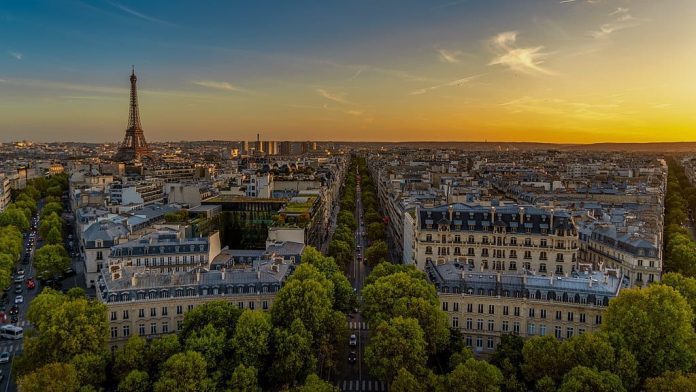Note, this article originally appeared as a blog post on the Guidehouse Insights website; it is reprinted here with permission. The original article can be found here.
“La ville du quart d’heure” was a key theme for Anne Hidalgo during her successful reelection campaign for mayor of Paris. The goal is to develop city districts that provide essential services such as schools, shopping, parks, and public transit within 15 minutes cycling or walking.
The concept is influenced by the work of urbanist Carlos Moreno, who talks about the need for a new chrono-urbanism that can improve the quality of life in cities, lower carbon emissions, and improve air quality. For Mayor Hidalgo, the concept is rooted in a broader ecological transformation of Paris that will make 100 percent of Parisian roads cycle-friendly by 2024 and promote a new relationship between the city, its citizens, and the environment.
This new approach to local communities was gathering momentum before the coronavirus outbreak. For example, Portland, Oregon has made the 15-minute neighborhood part of its city strategy, and Ottawa, Ontario is promoting the concept in its revised official plan. However, the need to control the pandemic and manage its long-term consequences has increased interest.
The 15-minute city has been adopted as one of the recommended actions for cities in the C40 Mayors Agenda for a Green and Just Recovery. Also, the shift to remote working during the crisis may have overcome one of the major barriers to its practical adoption, as more companies are accepting remote working as normal.
The 15-minute smart city involves advanced technology
The 15-minute city could be seen as antithetical to hi-tech visions associated with the smart city. The hyperconnected, Internet of Things (IoT)-enabled, data-centric city suggests a dependence on increased centralization and remote management rather than community-driven change.
But for many cities, a combination of community-focused innovation and the flexibility offered by technology may be a more effective route to a smarter city. Examples of how technology could support the 15-minute city include:
Adaptive street lighting: One of the advantages of smart street lighting is the flexibility of local lighting conditions. Lighting levels can be easily adjusted to meet local needs around public safety, entertainment, road safety, or environmental issues.
Flexible road management: Advanced traffic management and smart parking systems allow for increased flexibility in the management of curbside areas and traffic flow. While some neighborhoods may be more aggressive in reducing vehicle traffic, others may look to a more gradual transition to low carbon mobility.
Air quality monitoring: The increased granularity of air quality data provided by IoT devices can provide warnings on local pollution hotspots and support community-led changes in traffic and parking policy.
Centralized systems will still be needed to underpin this flexibility in the form of connected lighting systems, traffic management centers, and shared data platforms, for example. City-scale analytics will become even more important for coordination of initiatives and the ability to see what is and isn’t working.
The city should still be a place where strangers meet
There are potential downsides to the move to hyperlocalism. Smaller communities can become bastions of self-absorption and present barriers to the city-scale changes needed to address climate change, racism, inequality, or disease control.
Jane Jacobs, an important influence on the idea of the 15-minute city, argued that one of the ways a great city is different from a small town is that a city makes a space where strangers can meet in safety. The 15-minute city must maintain a commitment to diversity, safety for all, and tolerance of difference while providing a stepping stone to more sustainable and equitable communities.
Eric Woods is associate director for energy, sustainability, and infrastructure at Guidehouse Insights.

